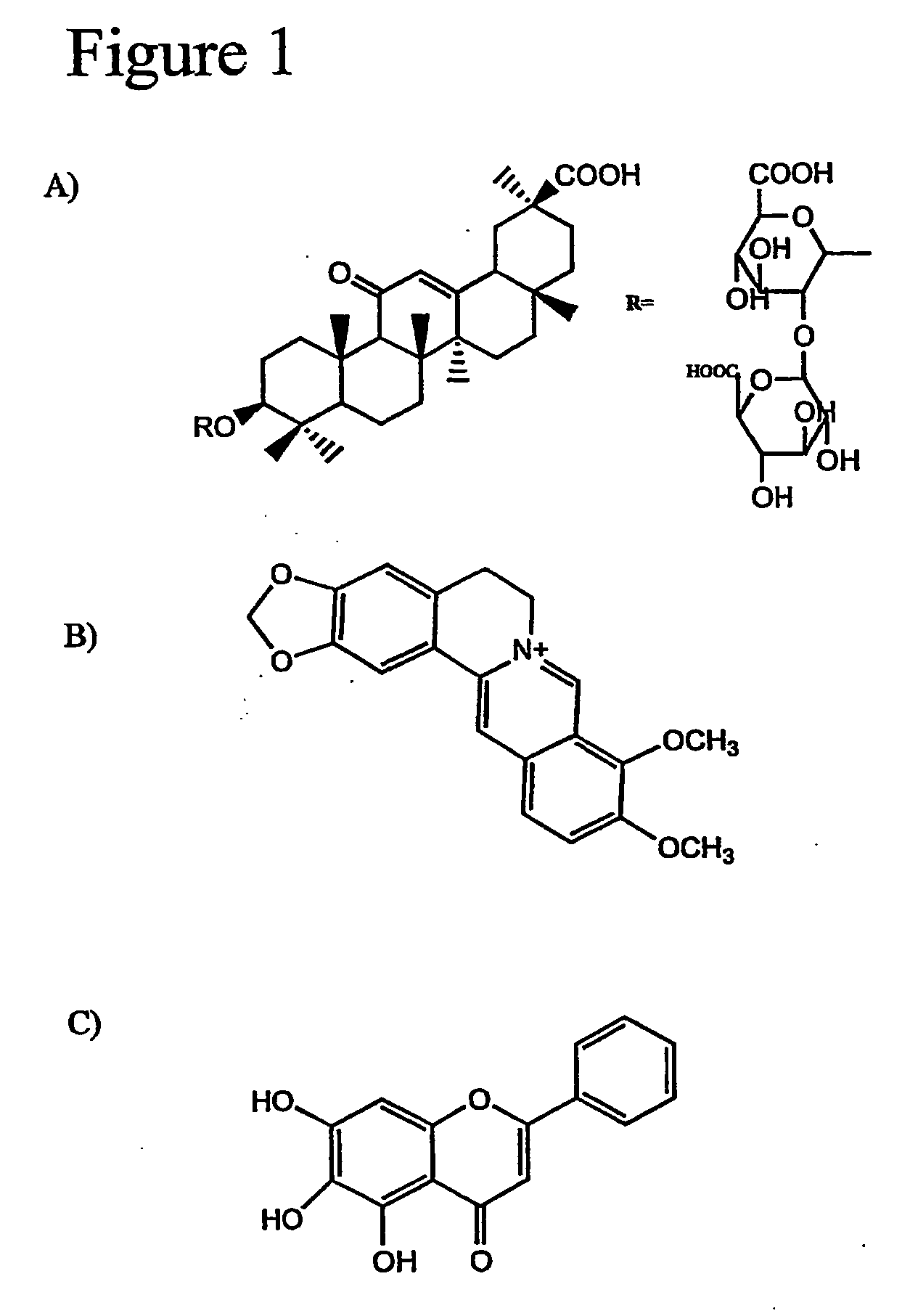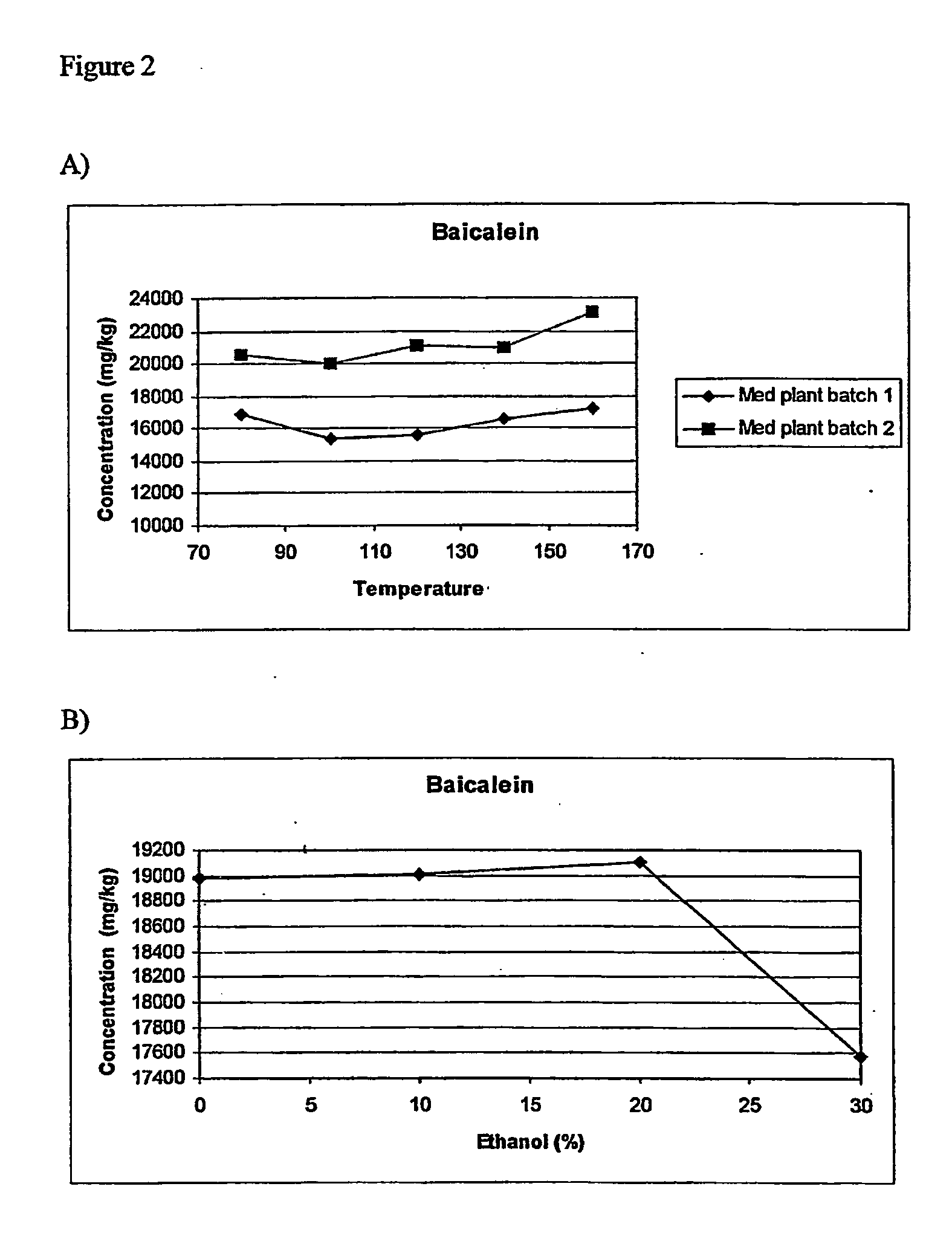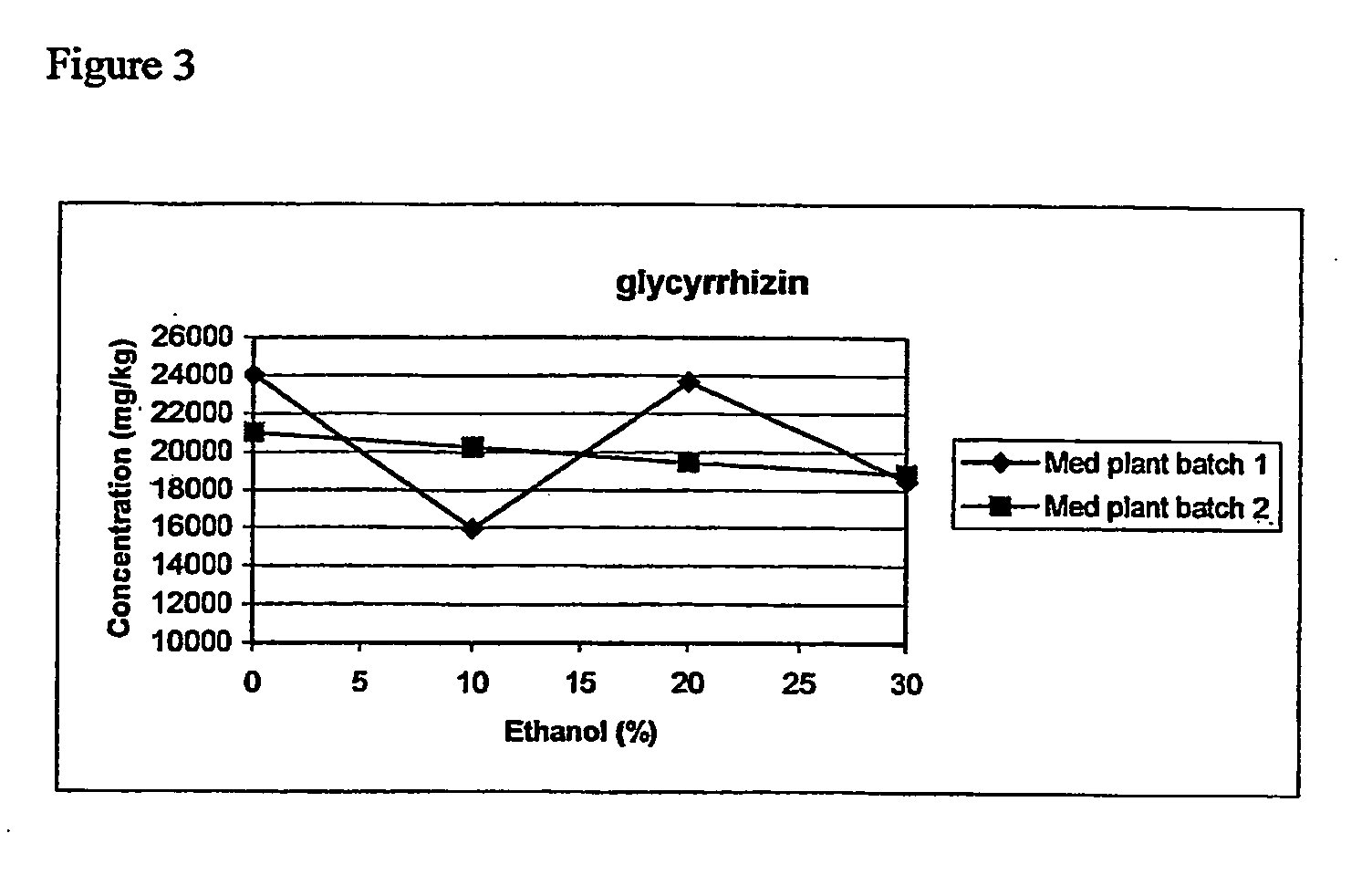Pressurized hot water extraction
a pressurized hot water and extraction technology, applied in the field of pressurized hot water extraction, can solve the problems of not being as efficient, unable to meet the needs of sample preparation, and most of the target analytes were reasonably polar and thermally labile, so as to achieve efficient, accurate and environmental-friendly effects
- Summary
- Abstract
- Description
- Claims
- Application Information
AI Technical Summary
Benefits of technology
Problems solved by technology
Method used
Image
Examples
example 1
Materials and Methods
[0053] All reagents were of analytical grade. Berberine chloride, baicalein and glycyrrhizin were purchased from Sigma (St. Louis, Mo., USA). Methanol and ethanol was purchased from Hayman (Witham, Essex, England). Sand purified by acid (about 40 to 100 mesh) was purchased from BDH Chemical Ltd (Poole, England). Sodium dihydrogen phosphate and phosphoric acid were purchased from Merck (Darmstadt, Germany) and Hayashi (Osaka, Japan). Pure water was obtained from Millipore Alpha-Q water system (Mdlipore, Bedford, Mass., USA).
[0054] Stock solutions of berberine chloride, baicalein and glycyrrhizin at. 1000 mg / l were prepared in methanol respectively. For all analysis, the working solutions of berberine chloride, baicalein and glycyrrhizin were prepared in the range of 0 to 60 mg / l in methanol. Linearity of berberine chloride, baicalein and glycyrrhizin were established between respectively with correlation coefficient R≧0.99. For the quantitation of marker compou...
example 2
Comparison of Results
Pressurized Liquid Extraction of Baicalein in Scutellariae Radix:
[0065] From previous studies, the parameters that had a significant effect on the extraction efficiencies of marker compounds in botanicals and herbal preparations are the applied temperature and the solvent used The time for extraction was set at 20 minutes as it was found that a significant portion of the target analytes would be extracted in the first 20 minutes. The pressure was reported to have little effect on the extraction efficiency as it was applied to keep the solvent in the liquid phase. Stated differently, the main purpose of the applied pressure was to keep the solvent in the liquid state at a temperature above 100° C. [10, 19, 20, 21, 22]. The solvent selected was methanol as baicalein was reported to be soluble in methanol and practically insoluble in water [23].
[0066] The effect of the applied temperature from 80 to 160° C. on the extraction efficiencies of baicalein from Scute...
PUM
| Property | Measurement | Unit |
|---|---|---|
| pressure | aaaaa | aaaaa |
| temperature | aaaaa | aaaaa |
| pressure | aaaaa | aaaaa |
Abstract
Description
Claims
Application Information
 Login to View More
Login to View More - R&D
- Intellectual Property
- Life Sciences
- Materials
- Tech Scout
- Unparalleled Data Quality
- Higher Quality Content
- 60% Fewer Hallucinations
Browse by: Latest US Patents, China's latest patents, Technical Efficacy Thesaurus, Application Domain, Technology Topic, Popular Technical Reports.
© 2025 PatSnap. All rights reserved.Legal|Privacy policy|Modern Slavery Act Transparency Statement|Sitemap|About US| Contact US: help@patsnap.com



